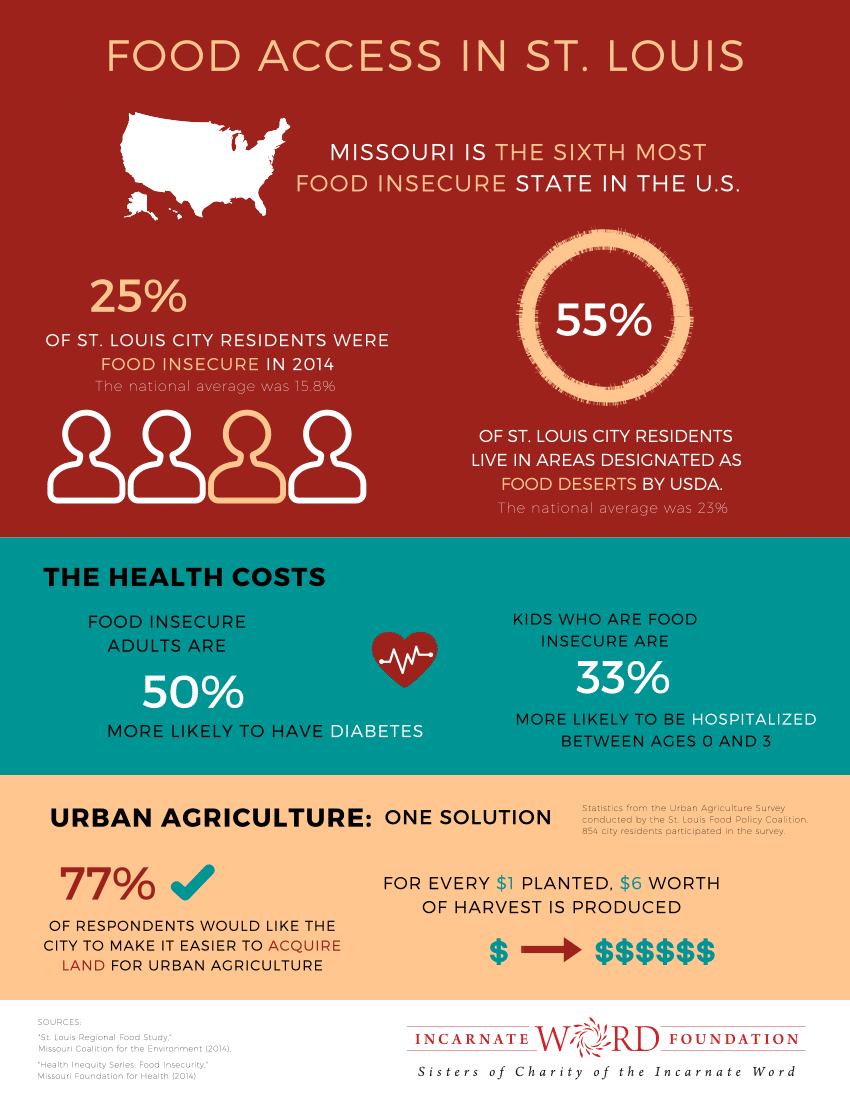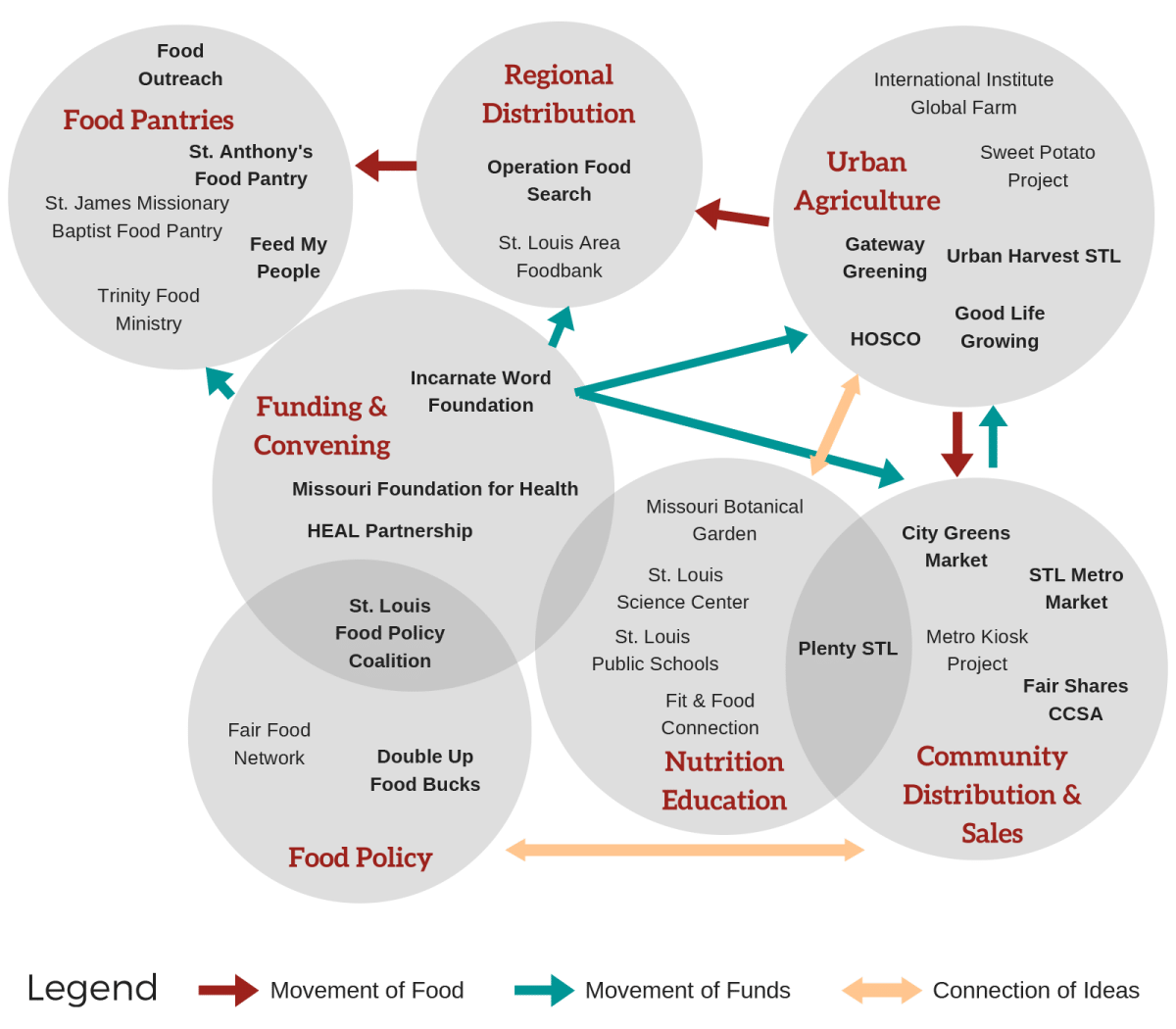Food Insecurity
In 2014, 54.9% of St. Louis City residents lived in neighborhoods the USDA classified as food deserts. Local organizations are developing collaborative solutions to support food access in these communities and beyond. Still, there’s work to be done. Below are key access barriers and strategies the city can take to address food insecurity in St. Louis, identified by food access organization leaders. SOURCES: St. Louis Regional Food Study, St. Louis City Urban Agriculture Survey (STL Food Policy Coalition), Health Equity Series: Feeding St. Louis (Missouri Foundation for Health)

Access Barriers
Food Deserts 🛒
The USDA defines food deserts as neighborhoods without a full-service grocery store within a half mile. Improving public transportation and incentivizing store development can help address a lack in access.
Price 💲
Even if fresh produce is available, it can be unaffordable for low and middle-income consumers. SNAP, WIC, and food pantry organizations can address cost as an access barrier.
Nutritional Knowledge 🥦
If you didn’t understand why something was good for you, what would make you want to eat it? Meal programs and nutrition classes can help increase access and develop nutritional knowledge.
Municipal Strategies
Supporting Urban Agriculture 🌱
- Identifying parcels of LRA land well-suited to urban agriculture
- Easing regulations for selling produce on-site
- Engaging neighborhood residents in the land sale process
Economic Incentives 💰
- Tax incentives to support small-scale grocery store development
- Supporting matching programs like “Double Up Food Bucks” in farmers markets and grocery stores
Collaboration 🤝
- Supporting agency partnerships (St. Louis Food Policy Coalition, HEAL Partnership, etc.)
- Working with stores in food desert communities to expand availability of local produce
Food Access Map
This map displays various organizations addressing food insecurity and increasing access to food in St. Louis City and County. The legend below describes the primary ways in which these organizations collaborate around this vital issue facing our community. (Information sourced from interviews with agencies in bold)

“I’m hopeful that we will continue to think in a way that’s more entrepreneurial than prescriptive – that people doing the grassroots work on the ground will have many opportunities to contribute their thoughts and ideas on what works for their community.”
Rhonda Smythe, Missouri Foundation for Health
